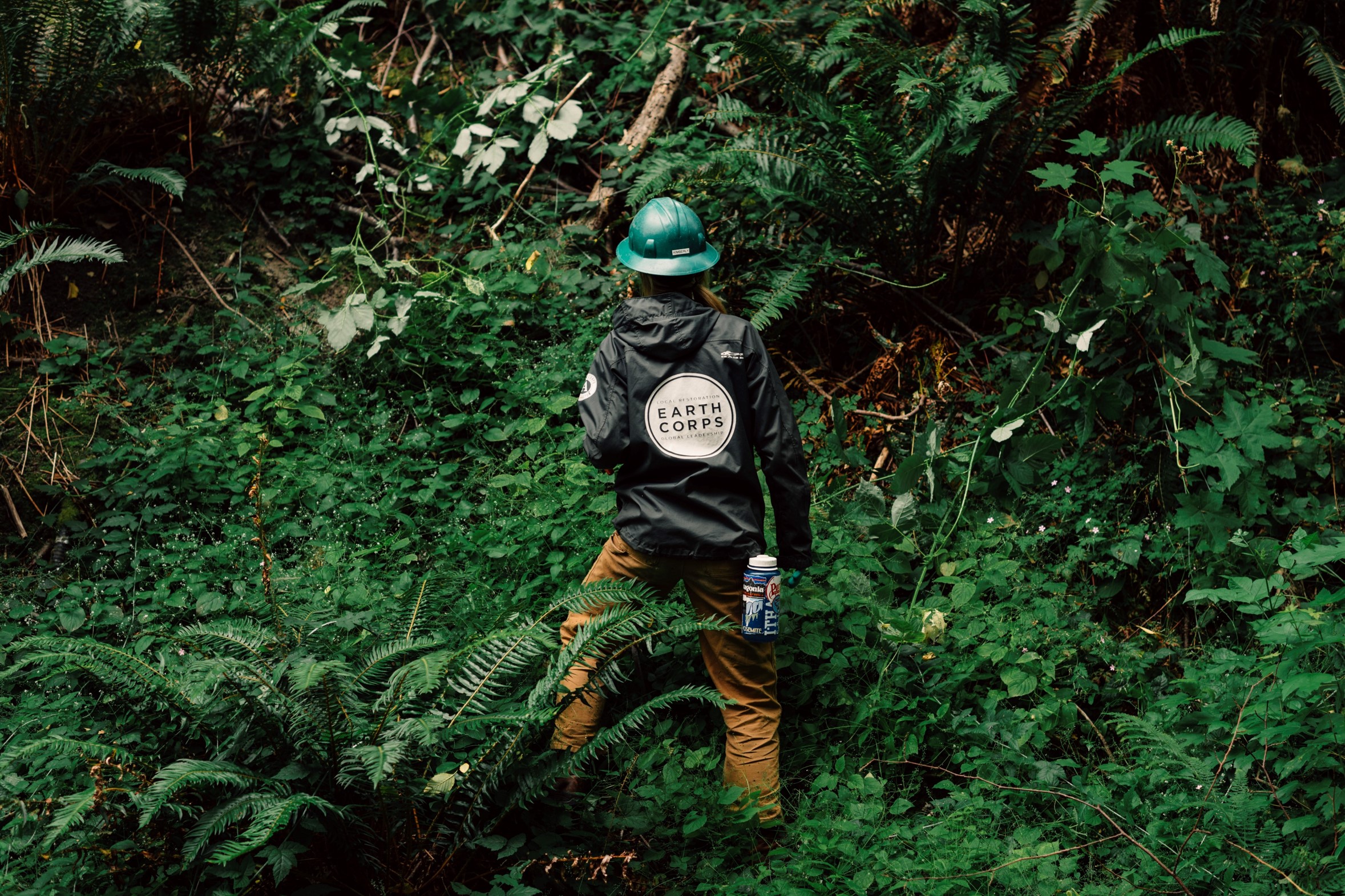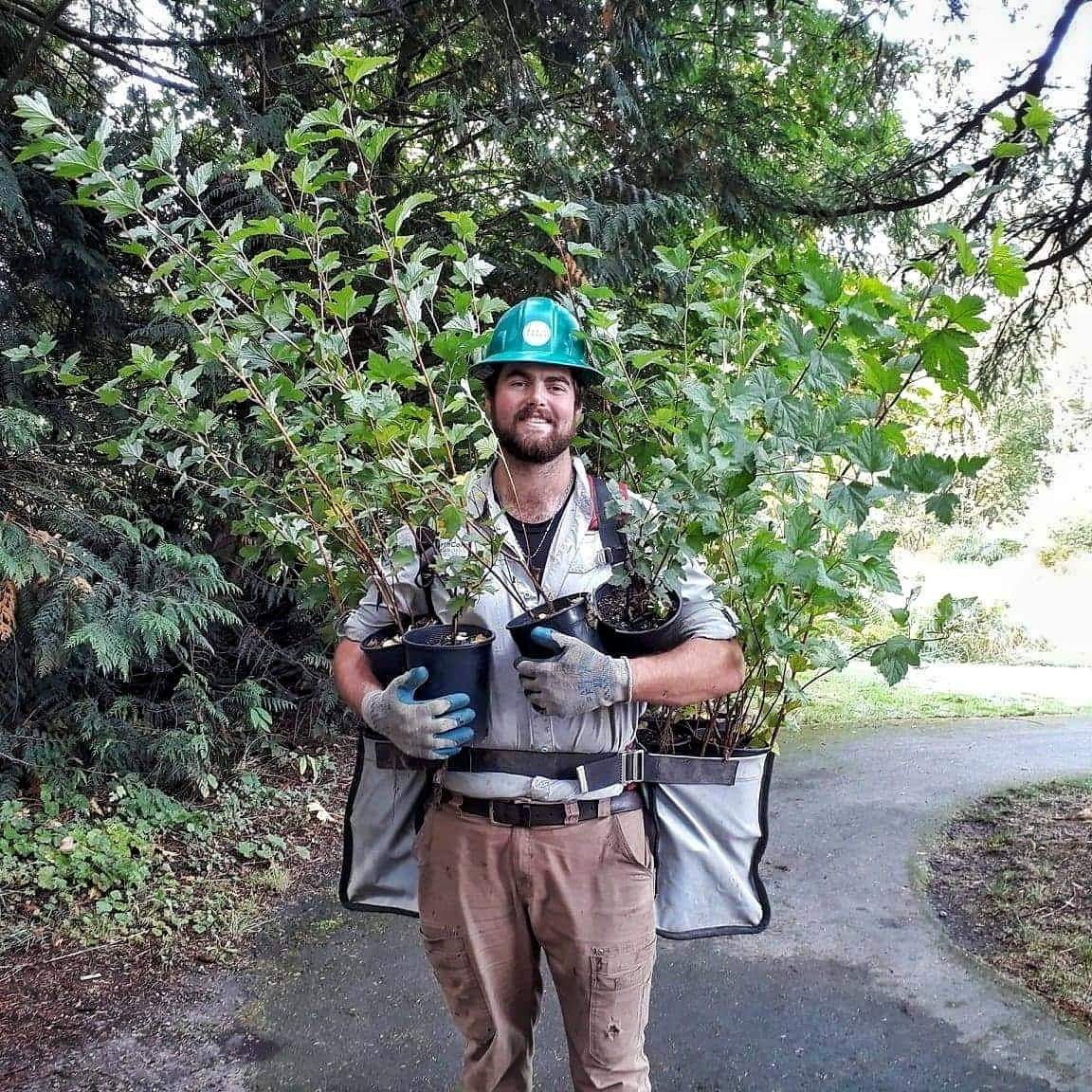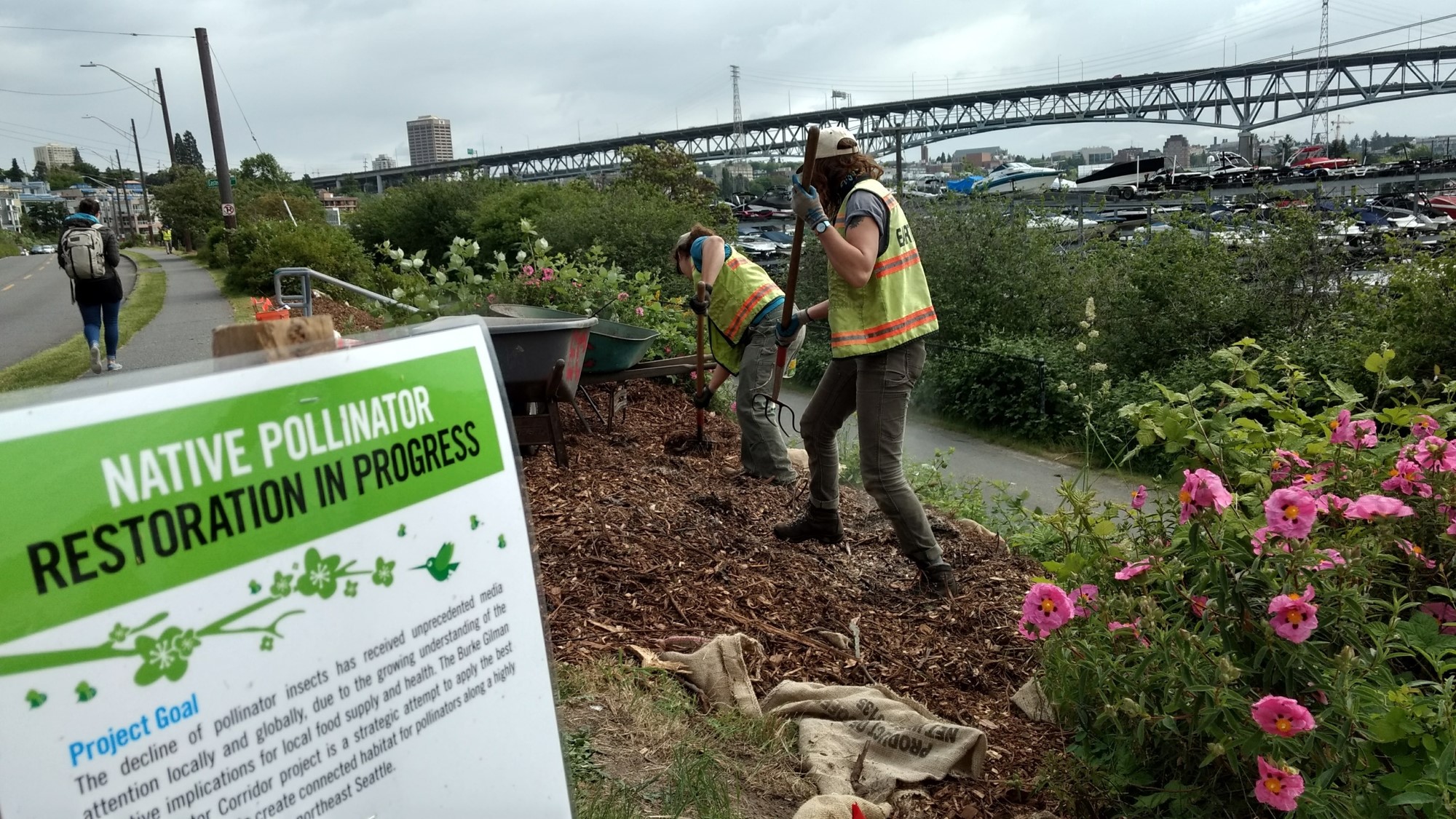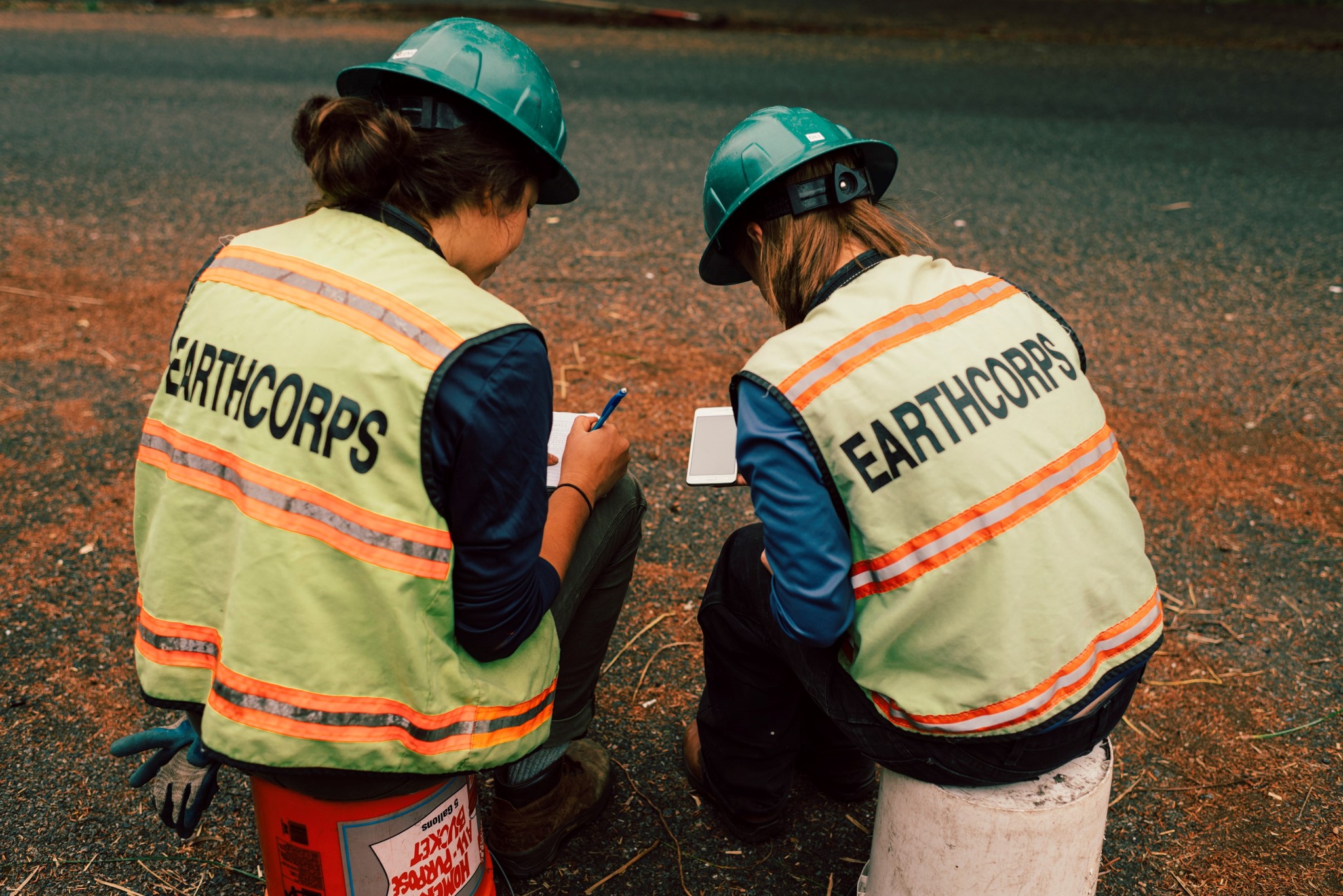“The beauty of restoration is that it conveys a message of action and hope, and it can happen at any scale—whether it happens in a backyard plot, a city park, a river valley, a national forest, or a globally threatened ecosystem.”
An ecosystem is a community of living things and non-living things (soil, water, weather, etc.) that interact together in an area. Every component in an ecosystem depends on every other component, either directly or indirectly.
Ecosystem restoration is a nature-based solution to repair and heal the land as well as our relationship with it. Ecosystem restoration helps sustain the diversity of life on Earth and is an active choice people make to address ecosystem degradation caused by human activity or natural causes.
Restoration can take many forms, such as dam removal to return a waterway to its original state—allowing salmon or a historical flooding system to return—or planting trees to control erosion and preserve soil integrity, or removing invasive plants to make space for native plants to reestablish a presence.
At EarthCorps, we work hard to support the Puget Sound ecosystem’s health through invasive species removal and restoration of natural habitat.
Plant Native Trees and Shrubs
About 80% of EarthCorps’ restoration work involves native species support. In the Pacific Northwest, invasive species like the Himalayan blackberry or English ivy displace native plants, degrade habitat, invade recreation areas, and chemically alter soil, with consequences for fire control and biodiversity. EarthCorps works to restore our parks and open spaces by removing non-native plants and planting native varieties that contribute to a restored ecosystem.
Native plants and animals have evolved in their environment to create an ecosystem with high biodiversity. Communities with high biodiversity support a wide variety of life and recover more quickly from environmental stresses and disturbances. Native plants also offer more ecosystem services (the positive benefits that ecosystems provide to humans and nonhumans).
How do invasive plants affect biodiversity?
Invasive species are often introduced to environments through colonization and globalization. They can threaten the biodiversity of an ecosystem by outcompeting native species. They are particularly adept at establishing thriving monocultures in degraded environments where native species have been damaged or removed entirely.
Not all non-native species act in an invasive way. However, those that do can have long-term effects on the health of native plants, habitats, and animals. For example, native pollinators in an area that depend on a specific early-flowering plant or a mammal that depends on the roots of a native plant for winter food can be negatively impacted by the dominance of invasive species that provide neither early season flowers nor winter forage.
The ecosystem benefits of native plants include:
-

Better water quality
The deep root systems of native plants increase the soil’s capacity to store water, reducing the amount of stormwater runoff that enters our waterways
-

Nutrient-rich soil less prone to erosion
Native plants use less fertilizers and pesticides and help to conserve topsoils and prevent open areas from wearing away
-

Food and shelter for wildlife
High-quality and largely available food, shelter, nest sites, basking sites, and perches for animals
-

Cultural preservation
Preservation of culturally significant food systems, ceremonial rites, medicines, and community structures for indigenous peoples of the area
Create Pollinator Habitat
The alarming rate of honeybee decline has a lot of people worried—and rightly so. But it’s not just the honeybees that are losing ground. Butterflies and bumblebees native to the Puget Sound region are also declining rapidly.
Moths, bees, butterflies, and even birds, transfer pollen between flowering plants as they flutter, fly, buzz, and crawl to snack on sugary nectar. Invasive plants get in the way of this process. When native plants are choked out, there isn’t enough pollen to sustain pollinators, and plant populations shrink as well.
To support pollinators, EarthCorps creates linked habitats called pollinator corridors. These native, flowering habitats are urban oases where pollinators can reliably find nourishment. Instead of mowed grass medians or empty lots choked with weeds like Himalayan blackberry and Scots broom, pollinator habitats provide reliable food supplies for birds and insects and improve the appearance of regional trails and open spaces for all of us.
Check out our Native Pollinator Best Practices Guide for more information
Forest Monitoring
Since 2008, EarthCorps has helped provide consistent monitoring of Seattle’s forested parklands. Forest monitoring is an important tool to evaluate challenges in forests that arise due to human impact, climate change-related stress, or other factors.
In Seattle, EarthCorps gathers monitoring data that is stored in a city-wide database. The city uses this data to create dashboards that provide both high-level and detailed analyses of native and invasive tree canopy and understory coverage, as well as a variety of information that is helpful in managing Seattle’s forests efficiently and effectively.




